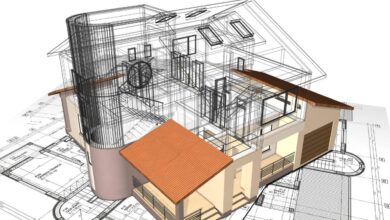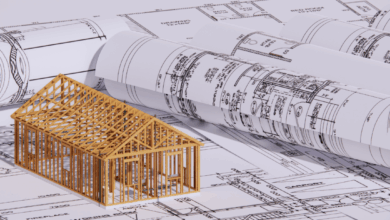Architecture Business: Running a Profitable Design Firm

The pursuit of architecture is often celebrated as a noble, artistic, and profoundly creative endeavor, focused on transforming abstract ideas into beautiful, habitable realities that elevate the human spirit and define our built environment.
However, beneath the elegant facades and soaring structural geometries lies a complex, challenging, and highly competitive business enterprise that requires far more than just design talent to survive and, more importantly, to thrive.
An architecture firm, regardless of its size—whether a boutique studio or a global powerhouse—is fundamentally a service-based business that must master the difficult balance between artistic integrity and financial viability, demanding meticulous attention to everything from client acquisition and contract negotiation to risk management and operational efficiency.
The success of any firm is ultimately determined not just by the quality of its drawings, but by the strength of its business management and economic strategies, ensuring projects are completed on time, within budget, and, crucially, profitably, allowing the firm to invest in its future and its employees.
Without a sharp focus on the operational and financial side of practice, even the most innovative and talented architects risk becoming brilliant artists running a financially unstable business.
This realization shifts the focus from simply designing a building to designing the business itself, making savvy management and smart economic planning essential components of every architect’s professional skill set, guaranteeing that the visionary work can continue.
Pillar One: Mastering Client Acquisition and Branding

The financial health of an architecture firm begins with a steady stream of projects, making strategic marketing and client relationship management essential, rather than relying solely on word-of-mouth.
1. Defining Your Professional Brand
A clear, compelling brand distinguishes the firm in a crowded marketplace and attracts the right type of projects that align with the firm’s expertise and mission.
A. Portfolio Development and Curation
A. The firm must maintain a high-quality, professional portfolio that clearly showcases its best, most relevant completed work.
B. The portfolio should be carefully curated to tell a visual story about the firm’s design philosophy and expertise in specific building typologies (e.g., healthcare, residential, or commercial).
C. Utilizing professional photography and consistent graphic standards is critical for communicating competence and aesthetic value.
B. Articulating the Value Proposition
A. The firm needs to clearly communicate what unique value it brings to a project beyond standard services.
B. This might include expertise in sustainable certification (LEED), computational design, or specialized structural resilience.
C. Clearly articulating value justifies the firm’s proposed fee structure.
C. Digital Presence and Thought Leadership
A. A modern architecture firm requires a sophisticated digital presence, including a visually strong website and active professional social media engagement.
B. Publishing articles, participating in industry panels, or winning awards establishes the firm as a thought leader in its field.
C. This effort builds credibility and broadens visibility beyond local referrals.
2. The Client Relationship Lifecycle
Successful client acquisition is a process of nurturing relationships, not merely submitting a bid.
A. Initial Marketing and Networking
A. Actively networking within target industries (e.g., real estate developers, hospital administrators, or city officials) helps identify future project opportunities.
B. Participating in industry events and conferences positions the firm where key decision-makers gather.
C. Leveraging existing professional contacts and past client satisfaction is often the most reliable source of new work.
B. Qualification and Proposal Submission
A. Before submitting a proposal, the firm must qualify the client and the project to ensure alignment with financial, logistical, and ethical goals.
B. A professional proposal clearly outlines the project’s scope of work, deliverables, and the proposed fee structure and payment schedule.
C. The proposal should clearly address the client’s specific needs and demonstrate a deep understanding of the project’s complexity.
C. Negotiation and Contract Management
A. The negotiation process requires a clear understanding of the firm’s worth and cost structure to avoid accepting unprofitable fees.
B. Utilizing standard industry contract templates (e.g., AIA documents in the US) helps define the scope, roles, responsibilities, and legal liability of all parties.
C. Clearly defined exit clauses and dispute resolution mechanisms must be included to mitigate future legal risk.
Pillar Two: Financial Management and Fee Structure
Architecture firms operate on tight margins, making diligent cost control, accurate pricing, and effective fee management essential for long-term survival.
1. Understanding the Cost Structure
The firm must accurately track and allocate all operational expenses to determine a profitable billing rate.
A. Direct and Indirect Expenses
A. Direct Expenses are costs tied directly to a specific project (e.g., staff salaries for project hours, specialized consultants, printing).
B. Indirect Expenses (or Overhead) are necessary for running the business but are not project-specific (e.g., rent, utilities, marketing, software licenses, administrative salaries).
C. Accurately tracking the ratio of indirect to direct costs is critical for setting profitable fees.
B. Establishing the Hourly Rate
A. The firm calculates a Target Multiplier, which is a factor applied to the direct labor cost (salary) to cover overhead and ensure a profit margin.
B. The standard professional Billing Rate is derived from the employee’s salary multiplied by this target multiplier.
C. Industry standard multipliers often range from 3.0x to 3.5x the direct labor expense.
2. Fee Structure Models
Architects primarily use three methods to charge for their services, each with its own advantages and risks.
A. Percentage of Construction Cost
A. The fee is calculated as a fixed percentage of the project’s final construction cost (e.g., 6% of a $10 million project).
B. This is common for traditional commercial and residential work where the scope is well-defined.
C. Risk: The fee shrinks if the client significantly reduces the scope or construction cost late in the process, demanding clear contractual protection.
B. Lump Sum or Fixed Fee
A. A single, fixed price is agreed upon for the entire scope of services outlined in the contract.
B. This model provides cost certainty for the client and is preferred for projects with a clearly defined, non-changing scope and duration.
C. Risk: The firm carries the risk of absorbing all costs if the project unexpectedly expands in scope or requires excessive uncompensated revisions.
C. Hourly Rate with a Not-to-Exceed Cap
A. The client is billed based on the actual hours worked by each staff member at their predetermined hourly rate.
B. A “Not-to-Exceed” (NTE) clause is often included to protect the client from unpredictable cost overruns.
C. This model is common for feasibility studies, forensic work, or projects where the scope is initially ambiguous.
3. Monitoring Cash Flow and Billing
Even high fees can lead to financial trouble if cash flow is not managed meticulously.
A. Timely Invoicing
A. The firm must establish a strict monthly invoicing schedule to ensure consistent revenue flow.
B. Invoices must be detailed, accurate, and clearly linked to specific project milestones and deliverables to expedite client payment.
B. Tracking Accounts Receivable
A. Diligently monitoring Accounts Receivable (A/R)—the money owed to the firm—is crucial for financial stability.
B. Establishing clear, contractual penalties for late payments helps discourage delays and maintains cash flow predictability.
Pillar Three: Project Management and Risk Mitigation

Design talent must be supported by efficient management practices to ensure profitability and avoid devastating legal exposure.
1. Project Planning and Staffing
Effective project management ensures that resources are allocated correctly and timelines are strictly maintained.
A. Work Plan Development
A. Every project requires a detailed Work Plan that breaks the entire process into distinct phases, tasks, and deliverables (e.g., Schematic Design, Design Development, Construction Documents).
B. Clear milestones and deadlines must be assigned to each phase, providing a framework for budgeting and scheduling.
B. Resource Allocation
A. The Project Manager must accurately estimate the labor hours required for each phase and assign staff with the appropriate skill sets and billing rates.
B. Maintaining an accurate utilization rate (the percentage of time staff spends on billable projects) is a key metric for firm profitability.
2. Contract and Scope Creep Management
Scope Creep—the uncontrolled expansion of project requirements without corresponding fee increases—is the single greatest killer of architectural profitability.
A. Defining Scope Boundaries
A. The contract must precisely define what the firm will deliver and, crucially, what it will NOT deliver.
B. Vague phrases like “assist the client” must be avoided in favor of measurable, definitive deliverables.
B. Change Order Implementation
A. Any client request that falls outside the agreed-upon scope must be identified immediately by the Project Manager.
B. A formal Change Order (CO) is issued to the client, clearly stating the additional required work, its associated time extension, and the corresponding fee increase.
C. The firm should never perform out-of-scope work without a signed, executed Change Order in place.
3. Legal and Liability Management
The architect is responsible for the health, safety, and welfare of the public, making risk management essential.
A. Professional Liability Insurance
A. Carrying Errors and Omissions (E&O) insurance is mandatory to protect the firm from financial loss resulting from design errors, omissions, or alleged professional negligence.
B. Insurance coverage is a high operational cost that must be factored into the billing multiplier.
B. Dispute Resolution Mechanisms
A. Contracts should specify a clear process for resolving disputes, often beginning with mediation or arbitration before proceeding to costly litigation.
B. This protects the firm from unpredictable legal expenses and lengthy court battles.
Pillar Four: Operational Efficiency and Technology
Modern firms leverage technology not just for design, but for seamless, cost-effective business operations.
1. Technology for Practice Management
Specialized software helps manage the business side of the firm, streamlining administrative tasks.
A. Project Management Software
A. Tools are used to track project status, staff utilization, budgeted hours vs. actual hours, and communication logs in real-time.
B. This allows leadership to identify projects that are falling behind schedule or over budget immediately.
B. Financial and Accounting Software
A. Utilizing specialized accounting software helps manage general ledger, payroll, invoice generation, and expense tracking.
B. Accurate and timely financial reporting provides leadership with the necessary business intelligence to make strategic staffing and investment decisions.
2. Investing in Talent and Culture
A firm’s greatest asset is its people; investing in talent is an economic strategy.
A. Competitive Compensation and Benefits
A. Offering competitive salaries, excellent benefits, and professional development opportunities attracts and retains top talent.
B. High staff turnover is a major financial drain due to the immense cost and time associated with recruiting and training new employees.
B. Continuous Professional Development
A. Funding for Continuing Education (CE) and licensure support ensures that the staff’s skills remain current with the latest technologies and building codes.
B. Investing in skills like BIM expertise, computational design, and sustainability certification directly enhances the firm’s competitive edge and billing capacity.
Conclusion
Running an architecture firm requires a masterful synthesis of design and business acumen.
Effective client acquisition demands a clear, professionally articulated value proposition and a strong digital brand presence.
Financial viability hinges on accurately calculating the cost structure, applying a profitable target multiplier, and establishing clear fee models.
Diligent cash flow management, timely invoicing, and rigorous tracking of accounts receivable are essential for operational health.
Project management requires detailed work plans and strict adherence to scope boundaries to avoid debilitating, uncompensated “scope creep.”
Risk mitigation is non-negotiable, demanding professional liability insurance and clear contractual dispute resolution mechanisms.
Leveraging specialized technology for practice management optimizes staff utilization and provides essential financial business intelligence.




